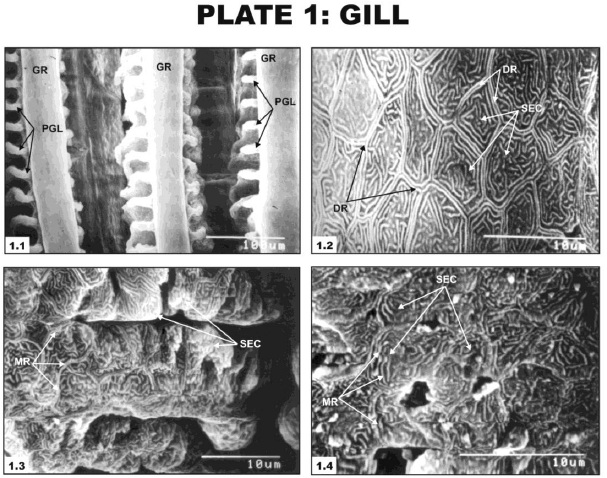Volume 5 Issue 1
Observations on the effect of glyphosate based herbicide on ultra structure
(SEM) and enzymatic activity in different regions of alimentary canal and
Channa punctatus(Bloch)
Author(s): T. SENAPATI, A. K. MUKERJEE AND A. R. GHOSH
Abstract: Glyphosate is the isopropyl amine salt of N- (Phosphonomethyl)-glycine, a broad-spectrum nonselective herbicide, which has been
extensively used to control annual and perennial weeds in agricultural, forest and aquatic systems. The ultrastructural changes in different
regions of alimentary canal and gill were observed by Scanning Electron Microscopic study on a non-target aquatic teleostea fish, Channa
punctatus. Fishes were exposed to herbicide at a dose of 4 mgl-1 generally used by farmers to control weeds in water bodies for a period of
45 days in laboratory condition with a control. Severe damage, shrinkage and degeneration of pentagonal cellular contour of stratified
epithelial cells (SEC) were observed in gill. Shrinkage of SEC resulting in degeneration of microridges was observed in buccopharynx.
Slight necrosed and distorted SEC was observed in oesophagus. Severe mucus secretion was observed in stomach. Erosion on the apical
surface of mucosal folds and columnar epithelial cells (CEC) and necrosis of CEC was also noticed in stomach. Obliteration of CEC along
its entire length from basement membrane was observed in the intestinal portion. After 45 days treatment by glyphosate protease activity
was slightly reduced in stomach and intestine in comparison to control fish. Amylase activity reduced in oesophagus and intestine in treated
condition. Lipase activity was also reduced slightly in stomach and intestine of glyphosate treated fish.

Fig 1.1-1.4: Scanning Electron micrographs of gill of control (C), glyphosate treated C.punctatus
Download Full Article : Click Here